Akita is a coastal prefecture located in northern Honshu of Japan. The natural resource abundant prefecture is a popular tourist spot with several attractions, including an ancient samurai district, hot springs, festivals, gorgeous sights and more. What are you waiting for? Read on for your next holiday destination.
Table of Contents
- All About Akita
- Places to Visit in Akita Prefecture
- Akita Food to Try
- Access to and Getting Around Akita
- Summary
All About Akita
Akita Prefecture (秋田県) is located along the coast of the north-western part of the Tohoku region along the Sea of Japan.
Akita is also a breed of dog that originated from this area which is the reason for its namesake. Have you heard of Hachiko, the loyal dog that waited faithfully for its owner’s return? Hachiko is an Akita whose hometown is located right within the prefecture.
Similar to China’s beauty province of Sichuan, Akita is known for their beautiful Japanese women coined “Akita Bijin (秋田美人)”, literally meaning Akita Beauty.
※ EU Business in Japan, "Akita Prefecture"
Land of Rice and Sake
If you’ve had the chance to try rice from different countries, you’ve probably wondered to yourself, “Why is Japanese rice so good?” In Japan, that “so good rice” is put to further competition with the various rice producing sectors within Japan. And Akita, blessed with fertile soil and abundant clean nutritious water, has perfect rice planting environments allowing it to produce one of the most delicious rice in Japan.
With rice comes its fermented friend, Sake (酒). Akita has more than 30 sake breweries placing it as top 6 in Japan for volumes of sake produced alongside sake-giants Hyogo and Niigata. So it’s really unsurprising why in all of Japan, Akita is recorded to have the highest amount of sake consumption.
※ EU Business in Japan, "Akita Prefecture"
Writer's Pick
Places to Visit in Akita Prefecture

Shirakami Sanchi
Recognized as a UNESCO World Heritage is an original untouched beech tree forest called Shirakami Sanchi (白神山地). According to UNESCO, it covers ⅓ of the Shirakami mountain range making it the largest virgin beech forest in East Asia. Additionally, with its unique temperate, it is habitat to rare flora and fauna including the Japanese serow and Japanese black bear.
There are various hiking paths in Shirakami Sanchi, suitable even for beginners. Whether it is to stroll through the forest itself, or to have a birds-eye view from afar, choose a path that suits your needs and most importantly your abilities. Frequented by trekkers is a 3-hour trek to Anmon Falls (暗門の滝). Nestled within a ravine, this gorgeous 105 meters high waterfall consists of three tiers of falling water. It is truly a breathtaking sight and a nice cooling area to rest and relax.
※ UNESCO World Heritage Centre, "Shirakami-Sanchi"
Senshu Park
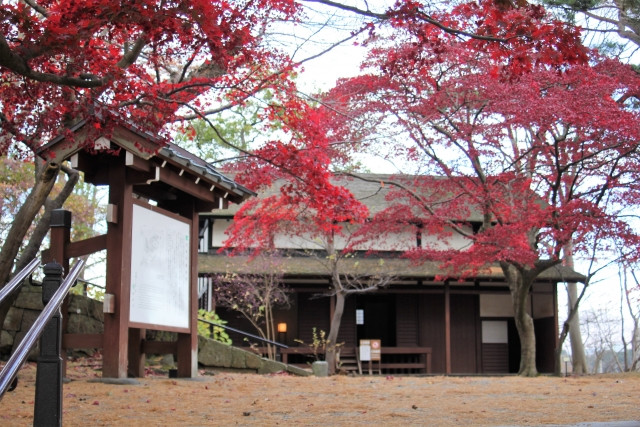
15 minutes walk from JR Akita Station (秋田駅), Senshu Park (千秋公園) is a beautiful Japanese garden that showcases the beauty of four seasons. No matter the time of the year, the garden is seemingly constantly blooming with flowers and a deep forest scent can always be scented in the cool breeze. Built on the ruins of Kubota Castle, the garden also holds historical significance with remnants of Kubota Castle’s residents, the Satake Clan, still remaining visible. The park is also a channel to other valuable historic sites, such as the Hachiman Akita Shrine, the Yojiro Inari shrine, and the Satake Historical Museum.
Yokote Masuda Manga Museum
In October 1995, the first ever manga museum in Japan, Yokote Manga Museum (the museum’s common name) opened its door paying homage to Akita-born Takao Yaguchi, the manga artist (or manga-ka) of “Tsurikichi Sanpei”. The museum houses hundreds of original illustrations from renowned manga artists like Shigeru Mizuki (GeGeGe no Kitaro), Osamu Tezuka (Astro Boy, Kimba the White Lion, Black Jack), Takahashi Rumiko (Inuyasha, Ranma 1/2), and more. Exhibitions are also regularly held to special showcase popular manga-ka, their official website has a history of every exhibition they’ve ever held. Recent ones include BEASTARS, ONE PIECE, Fullmetal Alchemist, and manga artist Takeshi Obata (Hikaru no Go, Death Note, Bakuman)’s 30th Anniversary NEVER COMPLETE.
To add on to your otaku experience, stroll through the museum shop for exclusive souvenirs and visit the manga cafe. Other than its fixed menu items, the manga cafe also offers limited time anime-themed food and drinks, inspired by the museum’s ongoing events.
Home of Hachi: Odate City
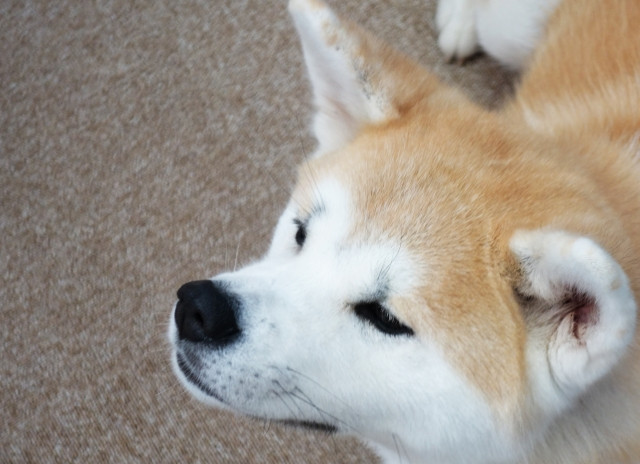
Surely, you are familiar with the heart wrenching story of Hachiko. Depicted in the 1987 film “The Tale of Hachiko” (ハチ公物語) and an 2009 American adaptation “Hachi: A Dog’s Tale”, the true story of a man’s best friend who waited till his last breath for his long deceased owner to come home touches the hearts of viewers all around the world.
As a tribute to the faithful Akita dog, a bronze statue of Hachi was completed in 1934 in Shibuya. It may come as a surprise to you but Hachi himself attended the ceremony of his own statue! And another one was made after Hachi’s death in 1935 in Odate. Unfortunately in 1944, both statues were melted down to become resources for the war. In memory of Hachiko, the bronze statue was rebuilt in front of Odate Station in 1987, perhaps not as well known as the one that was rebuilt in Shibuya, but just as significant nonetheless.
Odate City (大館市) also holds an annual memorial service, and an annual “Birth of Hachiko” festival. Throughout the city, many statues and artifacts resembling Hachiko can also be found. Indeed, Hachiko lived a life where he will always be remembered.
※ Odate City Office, "Odate, the home of the faithful dog, Hachi.(秋田犬)"
Lake Tazawa in Semboku
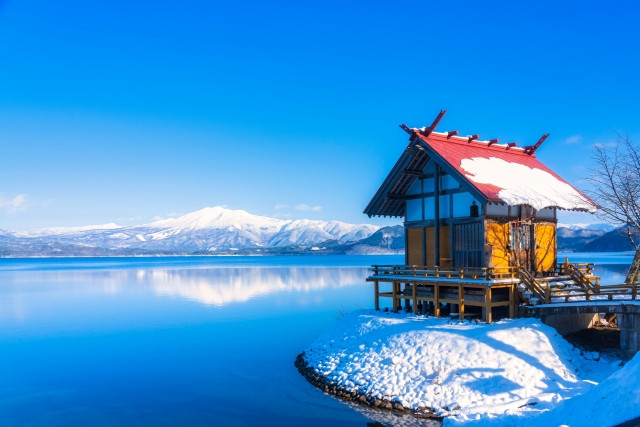
The result of volcanic activity more than a million years ago, 423.4 meters deep Lake Tazawa (田沢湖) is Japan’s deepest lake. Located in Semboku City, it is a 1.5 hours drive from Akita City. There are many activities to enjoy along its shores like a nice drive, cycling, picnicking and more! There are also lake activities such as a pleasure cruise or swimming in summer. Enjoy the sights of each season as their unique charm and colours accentuate the calm tranquil waters; sakura in spring, green of summer, autumn foliage of fall, and snowy white of winter. To the north of the lake, a classic red torii (Shinto shrine gate) stands tall. This is part of Goza no Ishi Shrine (御座石神社), dedicated to the Legend of Tatsuko, a lady whose search for beauty led to her transformation into a dragon. Her statue is nearby.
※ Akita Semboku City, "Lake Tazawa’s Scenery"
Lake Towada in Kosaka
Located within Towada-Hachimantai National Park (十和田八幡平国立公園) is Lake Towada (十和田湖), the biggest caldera lake that can be found in mainland Japan. For a brilliant view of the lake, visit Hakka Pass Observatory, a conveniently placed observatory deck overlooking Lake Towada. This spot is especially famous in fall for its ethereal autumn foliage.
Kimimachizaka Prefectural Natural Park in Noshiro
Established in 1964, the park was named after the “Hill of Waiting for You” (Kimimachizaka). The origins of its name is a romantic tale depicting Emperor Meiji and his beloved Empress Shoken. When Emperor Meiji visited the hill on a tour, what awaited him was a letter from his empress with a love poem contained within. Touched by the gesture, Emperor Meiji thus named the hill “Kimimachizaka”.
You can visit with your significant other. Ring the eternal love bell together and pray for continuing love at the Koibumi Shrine located in the park. The park is also a spectacular sight in spring when cherry blossoms colour the park in pink. Truly, romance is in the air in Wait For You park.
Kakunodate Samurai District in Kakunodate
Kakunodate (角館) is home to homes (pun intended), specifically samurai homes that date back to the Edo period. Back in those days, Kakunodate was a castle town and samurai base thanks to its highly defensible strategic location. Though the castle no longer remains, many of the bukeyashiki (武家屋敷) aka samurai houses are well-preserved condition. The area has since been added to the Important Preservation Districts for Groups of Traditional Buildings list.
Of the many samurai residences, only 6 are open to the public; the houses of Aoyagi, Ishiguro, Iwahashi, Kawarada, Matsumoto, and Odano. Each of the houses have their own special characteristics, such as the Kawarada House with its shoin-zukuri (書院造) architecture and dry landscape garden (rock garden), and the Ishiguro House which is the oldest samurai residence in the area with its black fence and separate entrances for VIPs and regular use.
Hot Springs to Relax

Tamagawa Hot Spring
The most acidic hot spring in Japan with a pH value of 1.2, Tamagawa Hot Spring (玉川温泉) also boasts having the largest output of onsen water from a single source at 9,000 liters a minute. Visit the nearby areas including Towada-Hachimantai National Park for bedrock bathing (the heat and natural radioactive rocks are good for health), and Shizen Kenkyu Road for sights of the geothermal rocks and the hot springs water sources. Unlike other hot spring resorts that advertise relaxation, Tamagawa Hot Springs focuses on balneotherapy (healing via bathing); they even have a resident nurse onboard.
TIP
-
Due to the high acidity, people with sensitive skin should seek medical advice beforehand.
-
Shin Tamagawa Hot Spring gets its water from the same source and is also under the same management.
※ Tamagawa Onsen
Oyu Hot Spring
With a history of around 800 years, Oyu Hotspring (大湯温泉) is the pride of Hotel Kazuno (ホテル一鹿角). It has been a popular destination since long ago receiving the titles of Village of Hot Spring (いで湯の里) and Village of Rising Steam (湯けむりの里). So famous was it that during the Edo Period, it was the Nanbu lord’s choice hot spring for therapeutic bathing. It became known as one out of five best hot springs in the Nanbu domain.
※ Hotel Kazuno
Nyuto Onsen
Nyuto Onsen (乳頭温泉) is a hot spring area on Mount Nyuto within Towada Hachimantai National park. There are 7 hot springs, all owned by ryokan, in the area; Tsurunoyu, Taenoyu, Kuroyu, Ganiba, Magoroku, Ogama, and Kyukamura. The most famous of these is Tsurunoyu with its thatched samurai roofing which is the oldest ryokan of the 7. For a breakdown on each onsen’s specialties, visit here.
TIPS
-
Some of the onsen have mixed gender baths which are less common in modern Japan.
-
Get the Yumeguricho pass that allows you to use all 7 onsens and ride the shuttle bus rounding the onsens.
Note: Only available to overnight guests at any one of the ryokans. Enquire with yours.
FUN FACT
Nyuto means nipple (heh).
Mount Nyuto was named such because it looks like nipples when viewed from Akita.
Kanto Matsuri
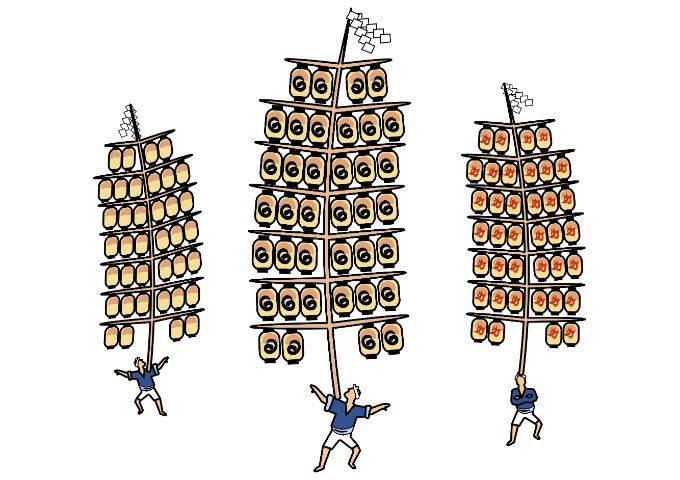
Kanto Matsuri (竿灯まつり) meaning pole lantern festival is held annually from 3rd to 6th August. As its name implies, the main focus of the festival is the balancing of pole lanterns by skilled performers. A truly magnificent feat when you consider the poles can go up to 12 meters tall, adorned with tens of lit paper lanterns, and weighing up to 50kg. Accompanied with the sounding of traditional instruments and the crowds chants of encouragement “dokkoisho”, the performers balance the poles interchangeably from their hips to shoulders to forehead. The poles start off from its minimum height, and as it is passed from performer to performer, height extensions are added. Enjoy the bright cheery atmosphere whilst you munch on classic matsuri treats like takoyaki, yakisoba, kakigori and more!
※ Akita Kanto Executive Committee, "Akita Kanto Festival"
Akita Food to Try
Aside from its beautiful sights and healing hot springs, Akita has lots to offer to our palates. Read on for some delicacies to bless your tongue with when visiting Akita.
Baba-hera Ice Cream
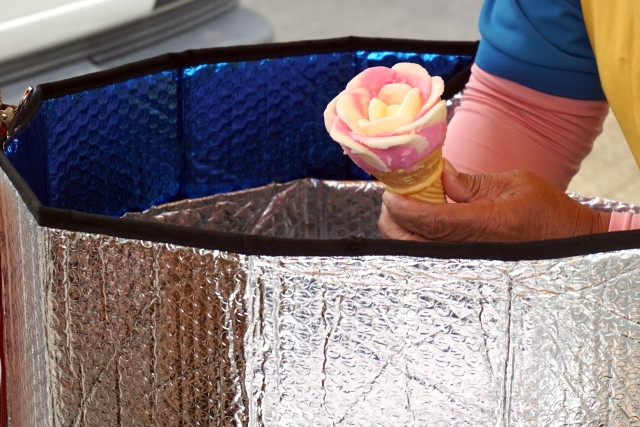
Homemade flower-shaped ice cream that is usually sold on hot summer days by old ladies (baba). The ice cream is scooped and shaped using an ice cream scoop (hera). Hence, it’s name.
Hatahata
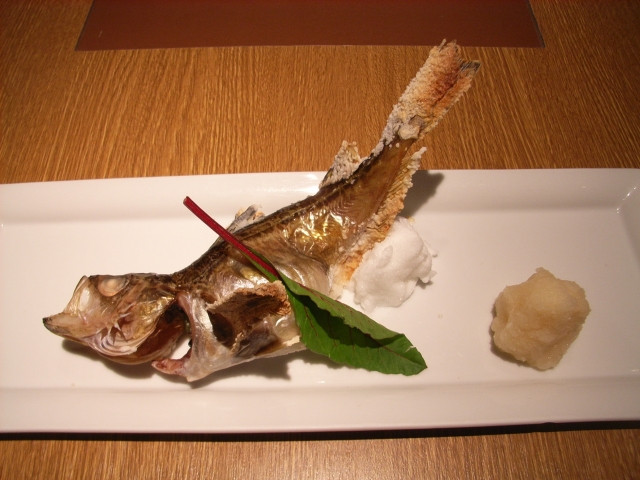
Or the Japanese sandfish is the prefectural fish of Akita. The best season for fishermen to catch hatahata is winter when they come ashore to breed. Hatahata Zushi is Akita’s local delicacy wherein the fish is fermented with salt, rice, and sake. It is also eaten grilled, boiled with broth, and pickled.
Akita Kayaki
Affordable yet delicious, Akita Kayaki is derived from Kayaki (grilled shellfish). It is a delicious hotpot dish of various types of shellfish. Though a local specialty, this dish can be prepared in various cooking styles such as European or Asian.
Iburigakko

Where the rest of the world often sundries and/or pickles their radish, Akita is unique in smoking their radish. The result - iburigakko (いぶりがっこ). A smoked daikon (大根 radish) with a crisp and savory flavor and smoky sweet aroma.
There are plenty of other special dishes in Akita that we don’t have time to coverm such as kiritanpo, inaniwa udon, yokote yakisoba, omagari miso soup, just to name a few.
Access to and Getting Around Akita
Access to Akita
Akita is accessible by airplane, bus, car, and train.
The fastest way to get to Akita from Tokyo is a 60 to 75 minutes flight.
Or enjoy the scenic route via shinkansen which takes up to 4 hours.
Getting Around Akita
Akita has many scenic spots to cover, to maximise your time without adhering to public transport schedules, a car is the best way to go. Alternatively, Akita has tourist buses operating daily that stop at popular tourist spots; you can get an unlimited hop on-off ticket at the train station.
Summary
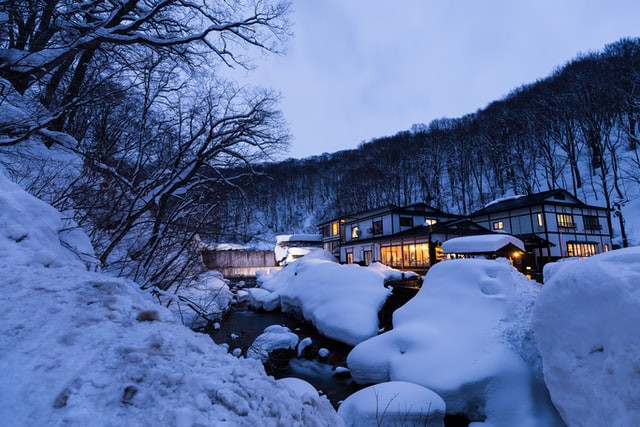
Akita Prefecture is huge! With so many things to see and do, you must be wondering how to cover it all! The trick is to come multiple times! Pick the area you find most interesting and start an in-depth exploration, then slowly work your way through the whole of Akita. Good luck and have fun.









.png)








.jpg)











